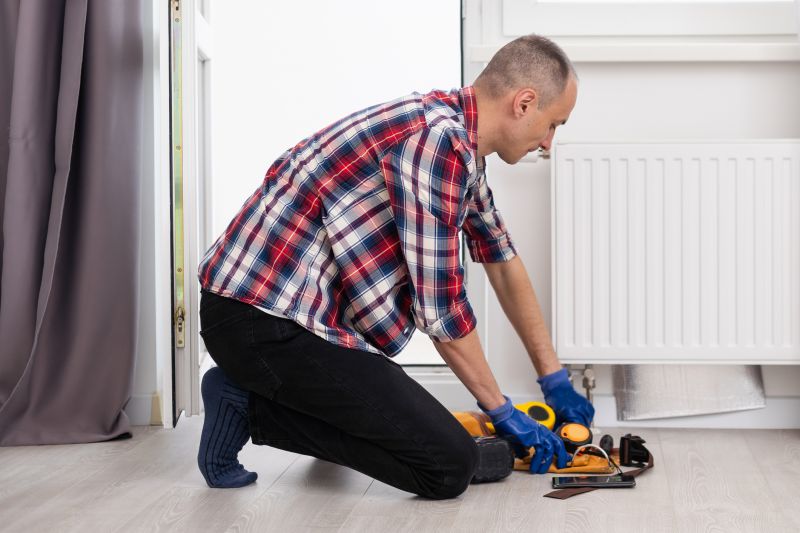Leading Plumbing Winterization Tools to Protect Your Home During Cold Months
Equip yourself with top-rated products that help prevent pipe bursts and ensure smooth plumbing performance in winter.
 Preparing your home’s plumbing system for winter involves a variety of products designed to prevent damage caused by freezing temperatures. Proper winterization can help mitigate the risk of burst pipes, leaks, and other plumbing issues that often occur during cold weather. These products are essential for homeowners living in regions with harsh winters or for those planning to be away during the colder months.
Preparing your home’s plumbing system for winter involves a variety of products designed to prevent damage caused by freezing temperatures. Proper winterization can help mitigate the risk of burst pipes, leaks, and other plumbing issues that often occur during cold weather. These products are essential for homeowners living in regions with harsh winters or for those planning to be away during the colder months.
Top Overall Option
Pipe Insulation Sleeves
Pipe insulation sleeves are versatile and easy-to-install solutions that help maintain consistent temperatures around pipes, reducing the risk of freezing. They come in various sizes and materials, making them suitable for different pipe types and locations. When properly fitted, these sleeves provide an effective barrier against cold air and help prevent pipe bursts during winter months.
Types of Products For Home Plumbing Winterizations
Foam Pipe Insulation
Flexible foam sleeves that wrap around pipes to prevent freezing and improve energy efficiency.
Thermal Tape
Self-adhesive heating tape designed to provide additional warmth to vulnerable pipes.
Outdoor Faucet Covers
Insulated covers that protect outdoor faucets from freezing temperatures.
Pipe Wraps
Heavy-duty wraps that offer extra insulation for exposed pipes in unheated areas.
Spray Foam Insulation
Spray foam products used to seal leaks and insulate gaps around pipes and fittings.
Drain and Blowout Kits
Tools used to remove water from pipes to prevent freezing and bursting.
Insulated Valve Covers
Protective covers for outdoor valves and spigots to prevent freezing.
Pipe Heating Cables
Electric cables that can be wrapped around pipes to provide consistent heat.
Sealant and Leak Tape
Materials used to seal leaks and prevent drafts around pipe fittings.
Sprinkler System Insulation
Specialized insulation for protecting underground sprinkler systems from freezing.
Basement and Attic Pipe Insulation
Insulation designed for pipes in unheated spaces susceptible to cold temperatures.
Heat Reflective Barriers
Reflective materials that help direct heat toward pipes and prevent freezing.
Popular Choices
Widely used for insulating both indoor and outdoor pipes to prevent freezing.
Commonly selected for outdoor plumbing protection during winter.
Popular for vulnerable pipes in unheated areas needing extra warmth.
Frequently chosen to safely remove water from pipes before winter.
Often used as an additional layer of protection on exposed pipes.
Preferred for sealing gaps and insulating difficult-to-reach areas.
Popular for outdoor valves and spigots to prevent freezing.
Selected for extra durability in exposed or unheated areas.
Commonly used to insulate pipes in basements and crawl spaces.
Often chosen for underground or outdoor sprinkler lines.
A comprehensive approach to winterizing plumbing includes insulating exposed pipes, sealing leaks, and using specialized products to drain or protect the system. Pipe insulation sleeves or foam wraps are common solutions that help maintain consistent pipe temperatures and prevent freezing. Additionally, thermal tape offers a convenient way to add extra heat retention around vulnerable areas.
Another vital component is the use of drain and blowout kits, which allow homeowners to clear water from pipes and prevent ice formation inside plumbing lines. For outdoor faucets and sprinkler systems, insulated covers and freeze-proof spigots are recommended to safeguard against cold weather. These products collectively contribute to a robust winterization strategy, reducing the likelihood of costly repairs and water damage.
Understanding the different types of winterization products and their specific applications can help homeowners make informed decisions. Whether insulating indoor pipes, sealing leaks, or protecting outdoor fixtures, selecting the right tools and materials ensures a safer and more efficient winterization process. Proper preparation can provide peace of mind, knowing that the plumbing system is well-protected against winter's challenges.
Key Buying Considerations
- Identify which pipes are most vulnerable to freezing, especially those in unheated or exposed areas.
- Choose insulation materials that are suitable for indoor or outdoor use based on location.
- Consider the size and diameter of your pipes to select appropriately fitting insulation products.
- Look for products with durable, weather-resistant materials for outdoor applications.
- Evaluate ease of installation, especially for DIY projects, to ensure proper coverage and sealing.
- Assess whether additional heating elements like cables or tapes are necessary for your climate.
- Check compatibility with existing plumbing fixtures and fittings to ensure proper fit.
- Prioritize products with good insulation R-values for better thermal protection.
- Consider the longevity and durability of materials to withstand winter conditions over multiple seasons.
- Ensure that outdoor covers and insulation are easy to remove or access for maintenance.
- Review product dimensions and coverage area to avoid gaps in insulation.
- Determine if products are suitable for underground or above-ground pipes.
- Factor in budget and cost-effectiveness, balancing quality with affordability.
- Verify whether products are designed to prevent mold and moisture buildup.
This page contains affiliate links. We may earn a commission if you make a purchase through these links, at no additional cost to you.
